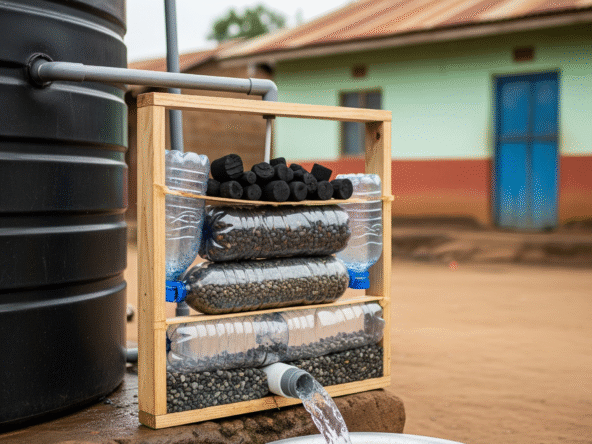In many parts of Kenya especially in rural and peri-urban zones like Kitengela, Ruiru, and Murang’a access to pressurized water remains a challenge. But with the right infrastructure, homeowners can enjoy consistent water flow without relying on electric pumps. One such solution? Installing an above-ground water tank tower.
This article explains how to design, build, and maintain a tank tower that is safe, cost-effective, and long-lasting whether you’re using a Kentank 5000 litres, an IBC tank, or a poly water tank.
1. Why Elevate Your Water Tank?
Building a tank tower improves water access and reliability by:
- Creating natural gravity-fed pressure (no pump required)
- Increasing shower and tap flow rate
- Protecting the tank from ground-level interference or damage
- Freeing up space in your compound
Learn more in Gravity-Fed Tank Setups in Kenya
2. How High Should Your Tank Tower Be?
The higher your tank, the greater the pressure. Use this chart to guide your build:
| Height Above Ground | Estimated Pressure (psi) | Suitable For |
|---|---|---|
| 6–10 feet | 2–4 psi | Garden taps, laundry |
| 12–16 feet | 5–7 psi | Indoor taps, showers |
| 18+ feet | 8–10+ psi | Multi-dwelling compounds |
Note: If you already use a pressure tank or automatic refill pump, you may not need excessive elevation.
3. Choosing the Right Tank Tower Structure
a) Steel or Welded Metal Frame
- Best for high-load tanks (like 10,000L or metal tanks)
- Requires anchoring and corrosion-resistant coatings
- Ideal for IBC tanks or elevated borehole systems
b) Concrete Pillars
- Extremely durable, low-maintenance
- Common in schools, flats, and community water projects
- Suitable for 5000 gallon or 10000 litre water tanks
c) Treated Timber Frame
- Cost-effective for 500L–2000L tanks
- Easy to install but requires weather treatment
- Best for temporary or small domestic towers
4. Construction and Safety Guidelines
- Start with a reinforced concrete slab at the base (minimum 4″ thick)
- Ensure your tower is vertical and level before mounting the tank
- Add guard rails or fencing if accessible by children
- Direct overflow pipes toward a soak pit or garden
- If harvesting rainwater, integrate first-flush filters and gutter strainers
5. Tank Plumbing Integration Tips
Pair your tower setup with:
- Float switch automation to prevent overflow or dry-run
- Tank enclosures for sun, theft, or vandal protection
- Multi-tank linking systems to balance storage and distribute usage
- Routine tank cleaning and maintenance to reduce sediment buildup
6. Mistakes to Avoid When Building a Tank Tower
- Using untreated or weak timber in wet regions
- Placing the tank on an uneven base—leads to leaning and cracking
- Not accounting for wind shear in open landscapes
- Overloading a light structure with a tank meant for concrete supports
An elevated tank tower is a low-tech, high-benefit solution for many Kenyan homeowners. It increases water pressure naturally, works with or without electricity, and adds value to your home when done right.
Whether you’re elevating a Kentank 5000 litres, a steel tank, or an IBC, remember to prioritize structure, safety, and plumbing integration.
Related Guides:


